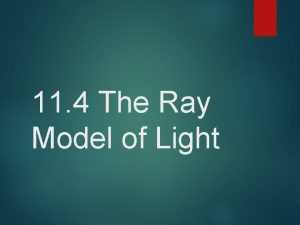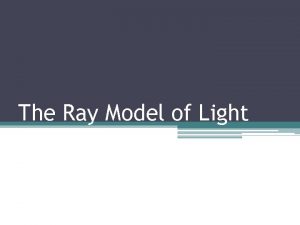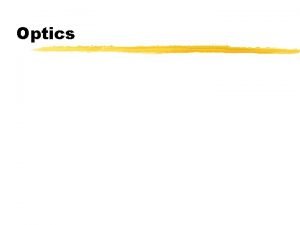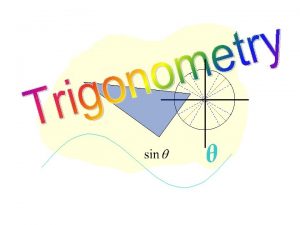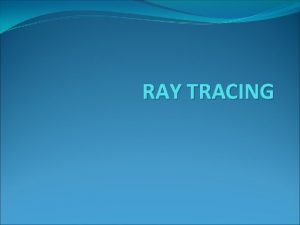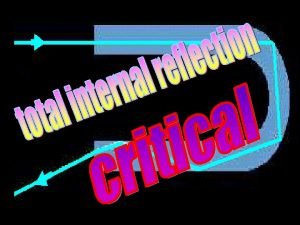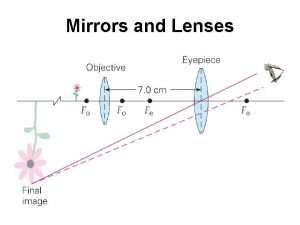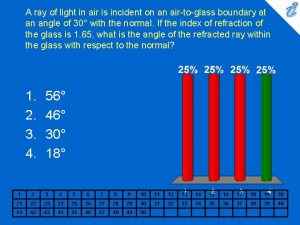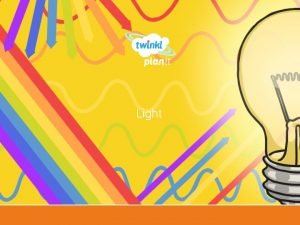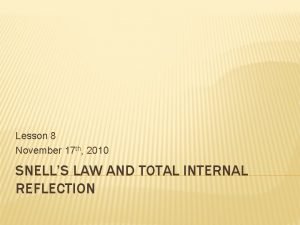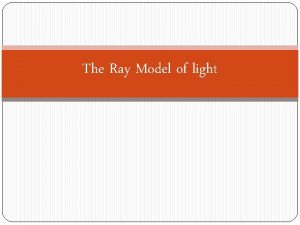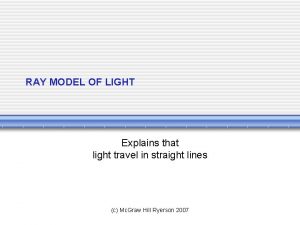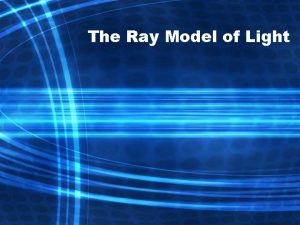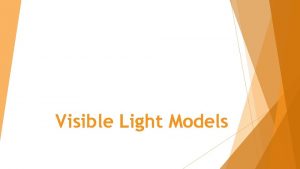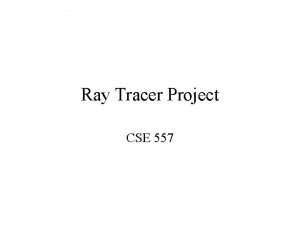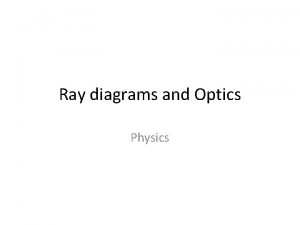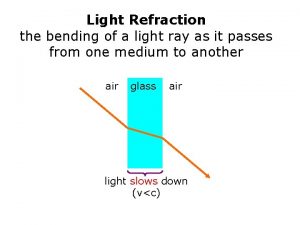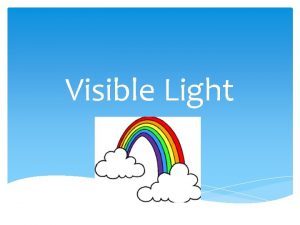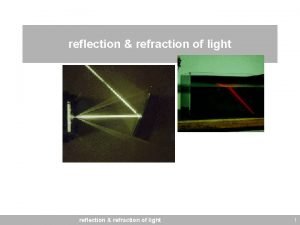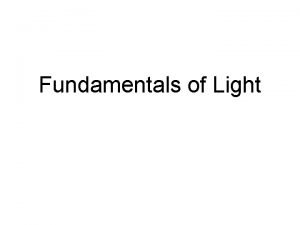RAY MODEL OF LIGHT The Ray Model of



















- Slides: 19

RAY MODEL OF LIGHT

The Ray Model of Light • Some properties of light are best described by considering light as a wave. • Other properties of light are best described by considering light as a particle. • The ray model of light uses a straight line, or ray, to show the direction the light wave is travelling.

Ray Model of Light • The Ray Model of Light is good for: –Studying optics –Studying how light reflects off mirrors –Studying how light passes through lenses

Light and Matter • Different materials can either transmit, absorb, or reflect light. Transparent • Objects allow light to pass through freely. • Objects transmit light (allows light through without being completely absorbed) • Ex. Drinking glass, clear window See pages 169 - 170

Transparent

Translucent • Objects allow scattered light through • Light changes in different directions after passing through object • Object is not seen clearly • Ex. Washroom glass bricks or windows

Translucent

Opaque • Objects prevent all light from passing through. • All light is absorbed or reflected • Ex. Black curtains, ceramic mug

Opaque

Shadows • A shadow is created when an opaque object absorbs light rays from alight source that is in front of the object • The Ray Model of Light can be used to predict the position, size and sharpness of a shadow See page 171

How does light form shadows? light source ☼Light rays travel in straight lines, radiating out from the light source. ☼If rays are blocked by an opaque object a shadow forms where the light cannot reach. ☼If the light source is moved closer to the object, more light is blocked and a larger shadow is formed.


Light Can be Reflected • Reflection is when light bounces off an object. – To act like a mirror, the surface must be smooth. • The incoming ray of light is called the incident ray. Incident ray Reflected ray • The ray that bounces off the surface is called the reflected ray.

THE LAW OF • The normal is an imaginary line perpendicular REFLECTION to the surface. • The angle of incidence (i) is measured from the normal to the incident ray. • The angle of reflection (r) is measured from the normal to the reflected ray. The angle of incidence equals the angle of reflection.


Light Can be Refracted • When light travels from one transparent medium to another transparent medium it changes speed. – This change in speed causes the light to change direction. • The bending of light, due to a change in speed, is called refraction. • The angle of refraction is measured from the refracted ray to the normal.

Refraction of Light in Water and Air • Objects in water appear in a different location than they actually are. This is due to the refraction of the light. • Light refracts when it passes through air at different temperatures. – For example, a mirage is the light from the sky bending as it approaches the warm air near the ground.


Mirage on the road looks with a pool of water, but are actually images of the sky refracted by warm air near the ground
 Light light light chapter 23
Light light light chapter 23 Light light light chapter 22
Light light light chapter 22 Light light light chapter 22
Light light light chapter 22 Ray model of light
Ray model of light Light ray model
Light ray model The ray model of light
The ray model of light Ray model of light
Ray model of light The ray model of light
The ray model of light Initial ray and terminal ray
Initial ray and terminal ray Ray casting method in computer graphics
Ray casting method in computer graphics A ray of light travels from an optical denser
A ray of light travels from an optical denser Power of lens
Power of lens A ray of light in air is incident
A ray of light in air is incident Magnetic spectrum
Magnetic spectrum Warming ray of light
Warming ray of light A ray of light approaches a jar of honey
A ray of light approaches a jar of honey Put out the light, and then put out the light
Put out the light, and then put out the light Difference between light dependent and light independent
Difference between light dependent and light independent Bouncing off of light
Bouncing off of light Material block light
Material block light



